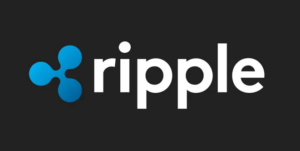The integration of 3D games on Ethereum has opened up exciting possibilities for both blockchain technology enthusiasts and gamers alike. By leveraging the power of Ethereum’s smart contract capabilities, developers are paving the way for a new era of interactive and decentralized gaming experiences.
One of the key advantages of integrating 3D games on Ethereum is the ability to create virtual worlds that are truly owned and governed by the players. Through the use of smart contracts, in-game assets such as characters, skins, weapons, and even entire virtual real estate can be tokenized as non-fungible tokens (NFTs). This means that players have true ownership of their digital assets, allowing them to buy, sell, and trade in-game items with unprecedented security and transparency.
Moreover, the integration of 3D games on Ethereum brings a new level of interoperability between different games and platforms. Players can take their hard-earned assets and use them across multiple games that support Ethereum’s standards such as ERC-721 and ERC-1155. This creates a seamless and interconnected gaming ecosystem where players can benefit from the value of their assets in various virtual worlds.
Another significant benefit of utilizing Ethereum for 3D games is the potential for decentralized autonomous organizations (DAOs) to govern and incentivize player behavior. Through DAOs, players can collectively make decisions about the direction of the game, participate in community-driven events, and even earn rewards for contributing to the ecosystem. This level of community engagement and ownership is unparalleled in traditional gaming environments.
From a technical standpoint, the integration of 3D games on Ethereum relies on the network’s scalability and efficiency. Ethereum 2.0, with its transition to a proof-of-stake consensus mechanism, aims to address the scalability issues faced by Ethereum 1.0, making it more suitable for handling complex 3D gaming environments. Layer 2 solutions such as Optimistic Rollups and zk-rollups further enhance the throughput and reduce transaction costs, making real-time interactions in 3D games feasible on the Ethereum network.
Developers looking to leverage 3D games on Ethereum should consider factors such as gas fees, transaction speed, and user experience. Optimizing smart contracts for gas efficiency, implementing proper asset tokenization standards, and designing intuitive user interfaces are essential for creating a seamless gaming experience on the blockchain.
In conclusion, the integration of 3D games on Ethereum represents a paradigm shift in the gaming industry, offering players new opportunities for ownership, interoperability, and community governance. As developers continue to innovate and push the boundaries of blockchain technology, we can expect to see a flourishing ecosystem of 3D games that redefine how we interact with virtual worlds.


